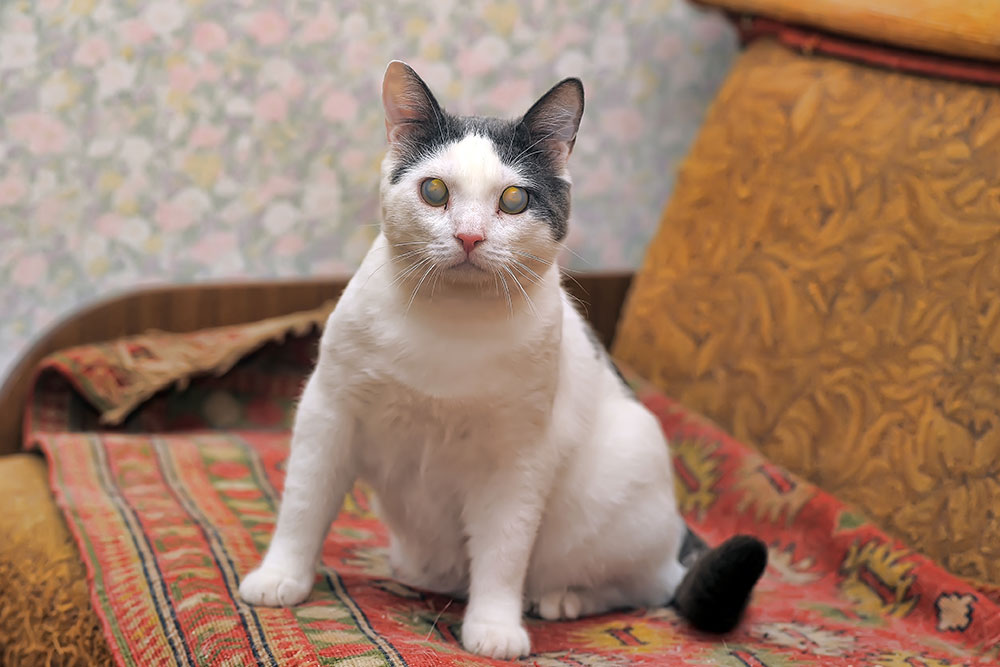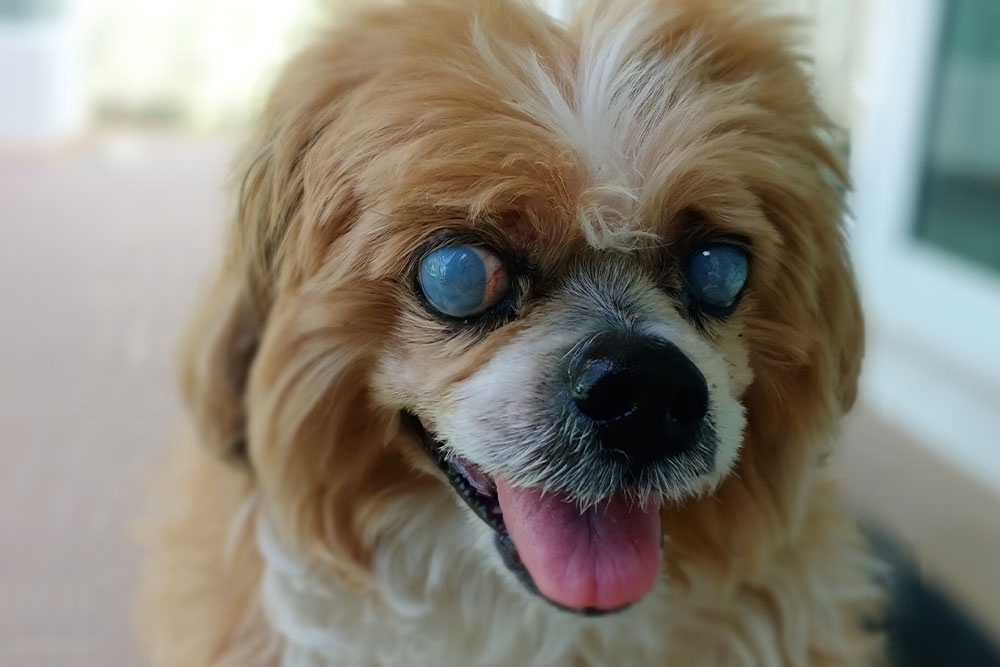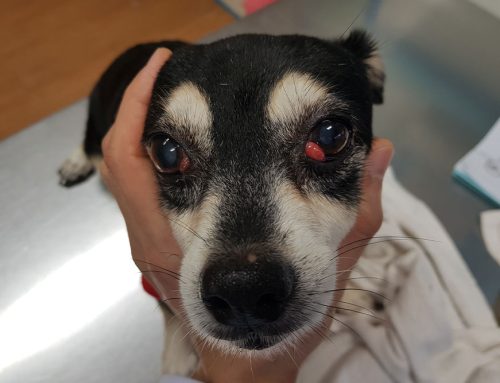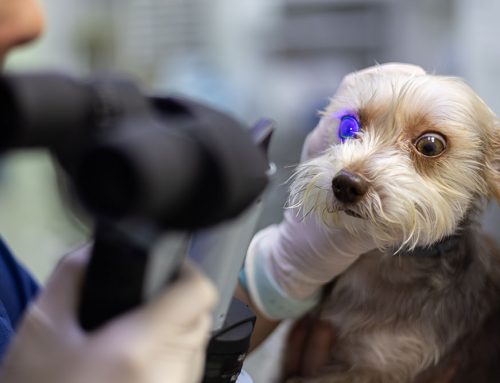As cherished members of our families, pets rely on clear vision to explore, play, and connect with the world around them. When that vision becomes cloudy, it’s more than a cosmetic concern—it can dramatically impact their safety, independence, and overall quality of life.
At Envision More Veterinary Ophthalmology in Cypress, Texas, we understand how concerning it is to watch your pet struggle with vision changes. Cataracts are one of the most common eye conditions affecting dogs and cats, and fortunately, they are also treatable. In this guide, we’ll walk you through what cataracts are, how to spot the signs early, what causes them, and how we can help restore your pet’s sight.
What Are Cataracts in Pets?
Cataracts occur when the lens of the eye becomes clouded, limiting the passage of light to the retina and impairing vision. Over time, this cloudiness can progress to complete blindness if not treated. While cataracts may sound like an inevitable part of aging, they are often manageable—and in many cases, reversible with surgery.
Learn more from Cornell:
Why Early Detection Matters
Cataracts often develop slowly, which makes early detection key. Addressing cataracts before they mature or lead to complications like inflammation or glaucoma gives your pet the best chance at retaining or regaining vision. Regular eye exams with your primary veterinarian—or referral to a veterinary ophthalmologist—can make all the difference.
What Causes Cataracts in Pets?
1. Age-Related Cataracts
Older pets, especially those over age 7, are at higher risk of developing cataracts as part of the natural aging process.
2. Hereditary (Genetic) Cataracts
Certain breeds—including Miniature Schnauzers, Poodles, and Cocker Spaniels—are genetically predisposed. These can appear early in life or develop with age.
- More info: Hereditary Eye Disease – BVA
3. Diabetic Cataracts
Diabetes is a leading cause of cataracts in dogs, often progressing rapidly due to high blood glucose levels that alter the lens structure.
- Explore: Managing Diabetic Cataracts
4. Trauma-Induced Cataracts
Injuries or trauma to the eye can lead to secondary cataract formation, especially in younger pets.
5. Congenital Cataracts
Some pets are born with cataracts, which may impair vision early in life. These may remain stable or progress, depending on the case.
- Learn more: Juvenile Hereditary Cataracts – UC Davis
Symptoms: How to Tell if Your Pet Has Cataracts
Recognizing cataracts early gives your pet the best chance of successful treatment.
Common Signs Include:
- Cloudy, bluish-white eyes
- Bumping into furniture or missing steps
- Hesitation in low light or bright light
- Anxiety or clingy behavior in new environments
- Redness or inflammation (may indicate secondary problems like uveitis)
- Learn more: Common Eye Conditions – ACVO
Diagnosing Cataracts: What to Expect
A full diagnostic workup helps us determine the severity and underlying cause of the cataracts, and whether your pet is a good candidate for surgery.
Diagnostic Tools:
- Slit-lamp exam: Allows close evaluation of the cornea, lens, and anterior chamber.
- Ocular ultrasound: Helpful if the lens is too cloudy to view the retina directly.
- Electroretinography (ERG): Measures retinal function to ensure the eye can process light post-surgery.
- Helpful guide: Cataracts vs. Nuclear Sclerosis
Treatment Options for Cataracts in Pets
Cataract Surgery: The Gold Standard
Surgical removal of the cataract, followed by the placement of an intraocular lens (IOL), is the most effective way to restore vision. The procedure is safe, precise, and offers high success rates in healthy, well-screened candidates.
- What to Expect: Dog Cataract Surgery – Zoetis
Aftercare and Recovery
- Pets wear an e-collar for 2–3 weeks post-op.
- Daily eye drops and checkups help prevent inflammation or complications.
- Most pets return to normal activities within days, with vision continuing to improve over the first few weeks.
Non-Surgical Management
In cases where surgery isn’t an option, we focus on:
- Managing inflammation
- Controlling blood sugar in diabetic pets
- Monitoring progression to prevent pain or secondary issues
- Further reading: Pet Cataracts – Embrace
Life After Cataract Surgery
The vast majority of pets regain functional, often near-normal, vision following cataract surgery. Owners frequently report improvements in confidence, mobility, and playfulness—proof that restored sight is life-changing.

Potential Complications to Monitor:
- Retinal detachment
- Intraocular pressure increases (glaucoma)
- Infection or inflammation
With close monitoring and post-op care, these risks remain low.
Can Cataracts Be Prevented?
Proactive Steps You Can Take:
- Annual eye exams for senior pets
- Routine glucose monitoring for diabetic pets
- Antioxidant-rich diets to support ocular health
- Timely treatment of eye trauma or inflammation
Why Choose Envision More Veterinary Ophthalmology?
At Envision More, we focus on more than restoring sight—we’re here to help pets reclaim their lives. From the first consultation through post-op care, our board-certified team provides compassionate, advanced ophthalmic care that prioritizes comfort, clarity, and quality of life.
- We offer:
- Advanced diagnostics and surgical expertise
- Personalized care plans
- Clear communication every step of the way
Schedule a Consultation with Us
We’re here to answer your questions and guide you through the next steps for your pet’s vision.







Leave A Comment